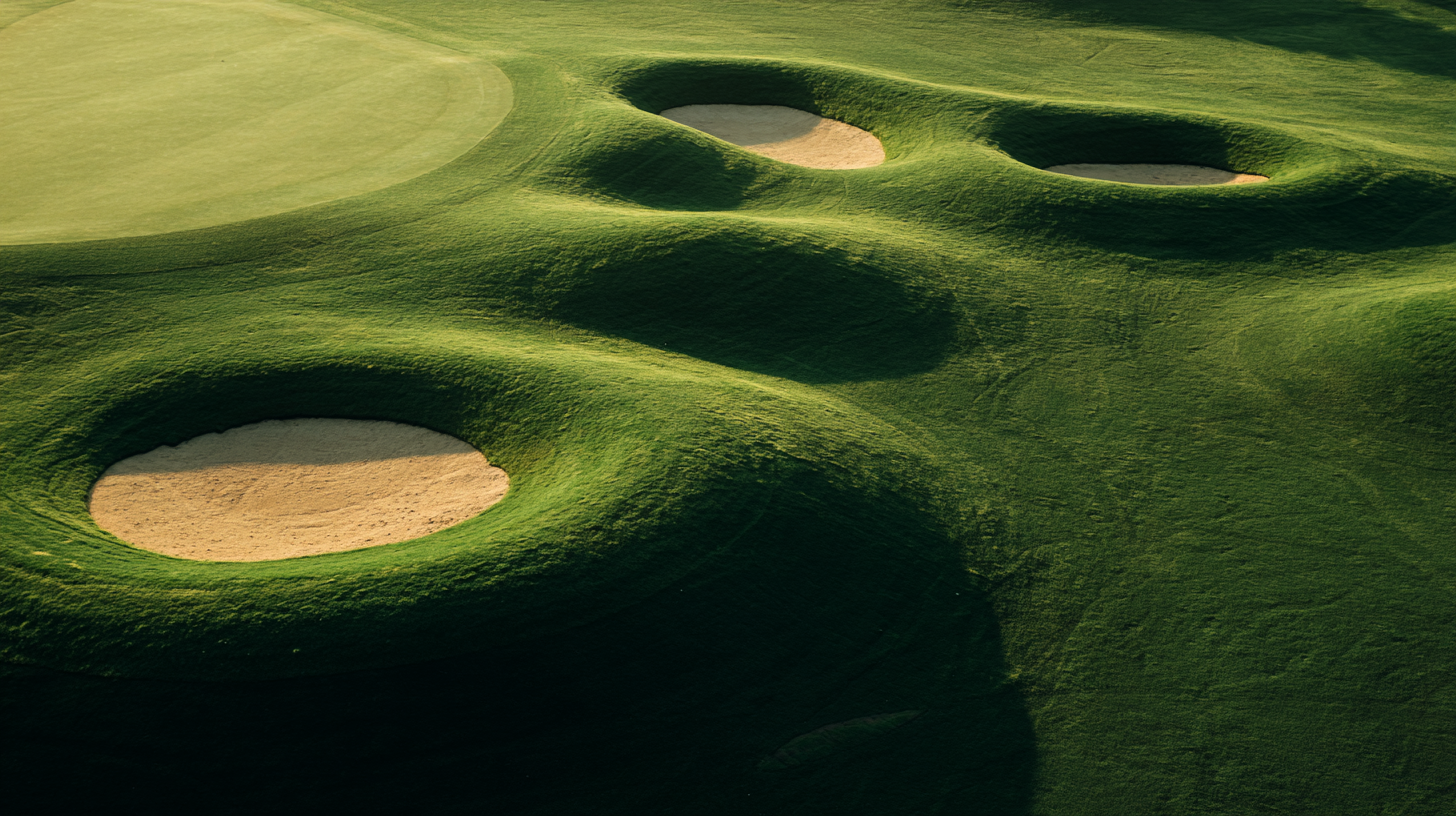Understanding the intricate design of golf holes is essential for both golfers and course designers alike, as it directly influences gameplay and player satisfaction. Recent studies indicate that golf course design can significantly impact a golfer's performance and enjoyment. According to the National Golf Foundation, nearly 25% of golfers consider course layout and design—a crucial aspect that includes the strategic placement of golf holes—as one of the top factors influencing their choice of where to play. Furthermore, innovations in design techniques, such as the integration of advanced GIS technology and environmental considerations, enhance the aesthetic and functional aspects of golf holes, catering to a range of skill levels and preferences. This exploration into the science behind golf holes not only illuminates the complexities involved in their design but also underscores the importance of continuous innovation in creating an engaging and challenging golfing experience.

The design of golf holes plays a crucial role in shaping a player's performance on the course. Understanding the fundamentals of golf hole design involves examining the strategic placement of hazards, the creative use of slopes, and the overall layout that dictates how a golfer approaches each shot. For instance, a well-designed hole will require players to think critically about their strategy, balancing risk and reward as they navigate bunkers and water features that challenge their skills.
Moreover, the impact of design on performance extends beyond mere obstacles. The orientation and length of a hole can significantly influence the skills required to master it. A longer par-4 may invite aggressive drives, while a shorter par-3 could demand precision and finesse. Designers leverage these elements to create a variety of playing experiences, encouraging golfers to adapt their techniques and strategies, ultimately enhancing their overall game. As players become more attuned to the nuances of hole design, they can refine their abilities and approach each round with increased confidence and skill.

Innovative technologies are revolutionizing golf course architecture, enhancing both the design of golf holes and the overall player experience. The integration of artificial intelligence is shaping the way courses are planned and constructed, offering data-driven insights that can optimize playability and aesthetics. By using AI, designers can analyze terrain, predict player behavior, and create layouts that challenge and excite golfers of all skill levels. This technological advancement not only redefines traditional course designs but also opens the door for unique on-course options, such as pitch-and-putt and par-three holes, catering to a wider audience.
Tips for golfers looking to improve their game include embracing these new design elements and incorporating diverse experiences into their practice routines. Consider visiting courses that feature innovative layouts to adapt your skills to different types of play. Additionally, look into technology-driven training aids that use precise data to enhance your swing mechanics and overall performance. Innovations in water management technology are also vital for sustainable golfing, demonstrating the importance of preserving resources while enjoying the game. Engaging with these advancements can significantly elevate your golfing experience.
| Design Element | Innovative Technology | Impact on Gameplay | Sustainability Aspect |
|---|---|---|---|
| Bunker Design | 3D Modeling Software | Improved Shot Accuracy | Recycled Materials |
| Green Slopes | Laser Leveling | Consistency in Putting | Native Grass Usage |
| Water Features | Eco-Friendly Irrigation Systems | Visual Appeal | Wildlife Habitat Enhancement |
| Tee Box Layout | Virtual Reality Simulations | Customizable Challenges | Water Conservation Techniques |
| Fairway Contours | Drone Surveying | Enhanced Shot Strategy | Soil Health Improvement |
The strategic placement of golf holes on a course plays a crucial role in shaping the overall performance and experience of players. By analyzing various course layouts, designers can utilize Geographic Information Systems (GIS) to map key aspects such as swing patterns, divots, and areas where players frequently lose balls. This data-driven approach allows for the optimization of each hole, ensuring that challenges are both engaging and fair. Understanding how players interact with specific designs can lead to innovations that enhance gameplay and encourage participation.
Moreover, advancements in remote sensing technologies pave the way for a more nuanced understanding of golf course layouts. The integration of multi-source data allows for fine-grained perception of course terrains, helping designers assess and adapt layouts based on environmental features and player behaviors. As golf courses are substantial land fixtures often catering to affluent communities, utilizing scientific methodologies for their design can help in maximizing both recreational value and sustainability while transforming bogies into birdies for players of all skill levels.
This chart illustrates the average score by golfers on different types of golf holes. Par 3 holes have a lower average score, indicating an easier challenge compared to Par 4 and Par 5 holes. Understanding these metrics can help players strategize their game based on course layout and hole design.
The design of golf holes plays a crucial role in influencing player psychology and performance on the course. According to a report by the National Golf Foundation, approximately 70% of golfers experience increased anxiety when faced with more challenging hole designs, such as those that incorporate water hazards or tight fairways. This psychological pressure can lead to poorer decision-making and shot execution, demonstrating that a well-thought-out design can either enhance or hinder a player's performance.
Additionally, research published in the Journal of Sports Science indicates that visual elements in hole design, such as the width of the fairway and the visibility of the green, can significantly impact a golfer's confidence levels. For example, wider fairways have been shown to reduce anxiety and encourage a more aggressive playstyle, with a 15% increase in successful drives recorded in studies. This connection between design and mental state underscores the importance of innovation in golf hole construction, presenting opportunities for course designers to create environments that bolster player confidence and ultimately improve game performance.

The design of golf holes is not just about aesthetics; it significantly impacts playability, and environmental factors play a crucial role in this process. Recent research on nitrogen rates and zoysiagrass putting greens indicates that proper nutrient management can enhance grass quality and performance, directly influencing how players interact with the putting surface.
Studies have shown that optimal nitrogen levels lead to improved turf health, resiliency, and overall playability, creating a better experience for golfers.
Additionally, evaluating the microclimates within a golf course can lead to innovative designs that cater to varying environmental conditions. Factors such as sunlight exposure, soil moisture, and wind patterns should be meticulously considered when designing golf holes. For instance, a study highlighted that incorporating environmental assessments into the design process could improve green speed and consistency, essential elements for competitive play. Understanding these elements allows designers to create holes that not only challenge golfers but also harmonize with the surrounding ecosystem, ensuring sustainability in golf course management.
© 2022-2025 Pelican Lakes Resort & Golf, All rights reserved | Privacy Policy
BROUGHT TO YOU BY THE WATER VALLEY COMPANY